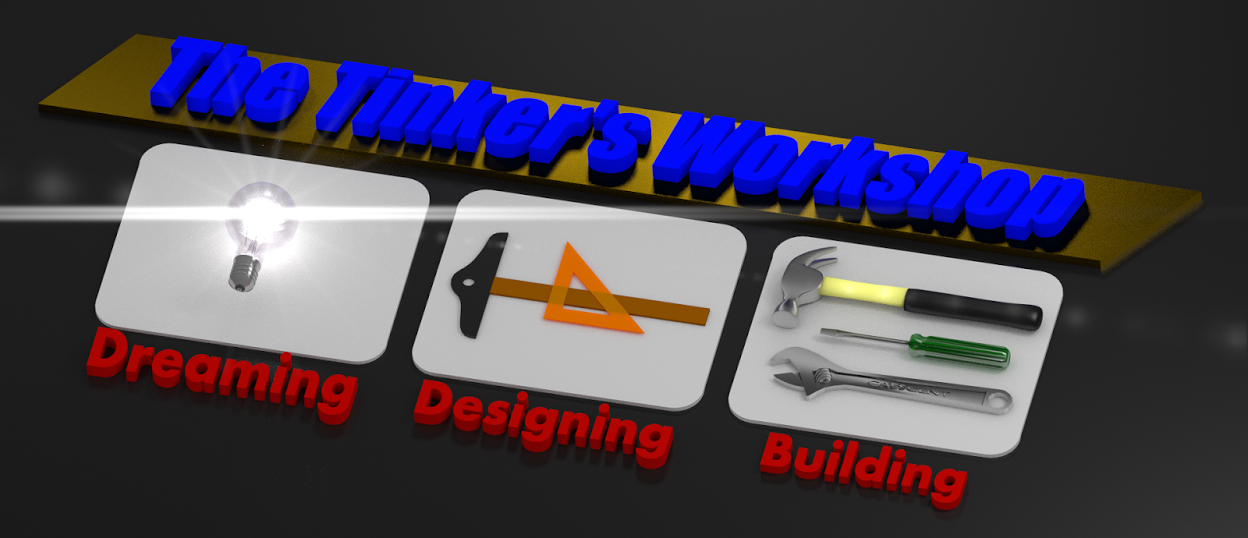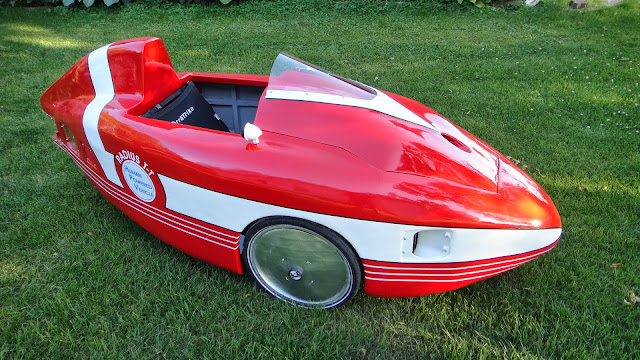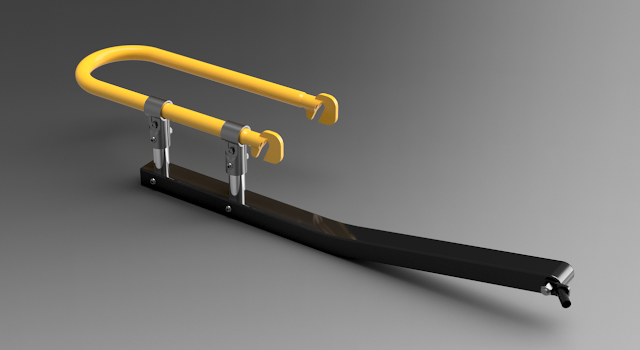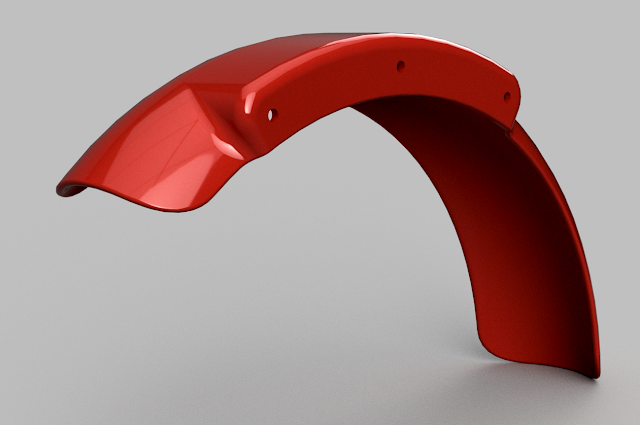Great news this week for the workshop! It was just like Christmas this week with the arrival of the new Ridekick power trailer for the velomoble. Here is what it looks like and how it will look once I get the modifications made to it for this project.
This is the latest and greatest from the Ridekick company. I was very happy to see some changes had been made to the design or at least the color scheme with the trailer. All of the images I had seen of the trailer online had the framework of the trailer painted in orange! Not a color that I was particularly fond of as it would not look good with the red and white velomobile. The body of the little trailer also has been changed with it now being a beige color instead of a light gray. I could have lived with the gray but again I plan on making a color change there as well so this is not an issue.
The little trailer sitting here on my work table stands 16" tall, 39" long, and 24" wide sporting nicely chromed five spoked 12.5" wheels.
The cargo capacity of the trailer has a very spacious 41.8 liters for such a little carrier. Mark Wanger the CEO of Ridekick International told me when I visited with him on my recent motorcycle trip to Colorado that he was able to carry at least three bags of groceries in the power trailer. With a carrying capacity of 75 pounds this is one nice little hauler. The trailer also has a 500 watt electric motor using a LifePO4 30Ah lithium battery with a range of 35 - 40 miles.
But with all of this goodness I am still planning on making changes to better fit my vision of the little trailer for use with my velomobile.
This is my vision of the conversion that I will do on the little trailer. With the trailer frame already being black instead of orange in color it has saved me a bunch of work to get the trailer in the shape that you see here. I will only have to paint the body of the trailer starting with the bottom tub. This I plan on painting gloss black. I was worried about the process of dismantling the trailer for painting until I saw it first hand. There are only a three screws that hold the tube to the metal frame along with few more that hold the electrical controller for the battery set up. The wiring unplugs easily and is idiot proof so there is no worries that I will mess things up in prepping the trailer for paint.

As is most obvious the color of the trailer will be changed to a nice bright red with a white racing stripe for the lid and of course the addition of color matched fenders and new rear reflectors.
I have the mounts for the new reflectors already 3D printed and am prepping them now as of this writing for paint. Once I get them all put together along with the new trailer hitch that has come together for the velo I will post about them when I am farther along with them soon. In the meantime enjoy the latest update and plans for this great addition for the velomobile!













